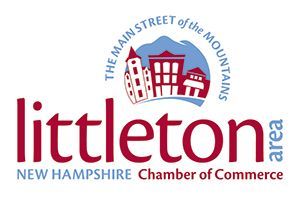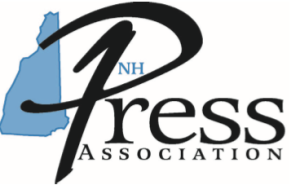
I never forgot that bit of history and, over the years, each time I drove by the historic marker commemorating Fox in East Concord, I would think about what it took for the four to willingly give up their lives for others.
It turns out I was missing an important part of the story, namely that George L. Fox lived and preached next door in Gilman. Today, thanks to dedicated volunteers, the Rev George L. Fox Memorial Chapel on 52 Elm Street in Gilman tells the story of that remarkable man.
Thanks to my friend Art Cohn who is a nautical archaeologist, co-founder of the Lake Champlain Maritime Museum and one of the most knowledgeable people of the Lake Champlain relics, I now know a lot more about Fox, his family and the other three Chaplins.
Art had talked to me about the possibility of visiting the Memorial Chapel which he had not known about until recently. Last month we did just that along with our wives thanks to Scott Leigh who came down from Canaan to give us a tour during which we learned so much.
Leigh is Vice Chair and Renovation Chair of the nine person board that is responsible for the memorial. They are assisted by a dedicated group of volunteers who give countless hours to the make the memorial what is is today and will become in the future.
For those who never learned of that fateful day during WWII, the following is a summary. On the night of February 3, 1943, after a German U-boat struck the transport ship with a fatal blow, Rev. Fox and three fellow chaplains helped guide soldiers to safety, giving up their life jackets and their places in the lifeboats, ultimately perishing together in prayer and unity. Their courage and compassion transcended faith, background, and rank, leaving a legacy that still inspires today.
That is the part that many of us knew but his life before that is also remarkable.
Fox entered WWI underage at 17 and served as a medical orderly saving countless soldiers on the battlefields on the Western Front in France. He was credited for carrying or even dragging the wounded to safety under enemy fire.
He was shot and repeatedly exposed to mustard gas without benefit of a gas mask which left him with permanent nerve damage. On the day before the Armistice was signed, a building collapsed on him breaking his back. He was discharged a highly decorated hero at age19.
After the war he left a successful career as an accountant to enter the ministry. His life as an itinerant Methodist Minister in meager, sometimes dire situations never made him doubt his calling or lower his spirit. It was the height of the Depression, a very dark period. He tended to his flock, and is said to have done so with a jovial disposition even though he and his family survived on next to nothing.
Gilman was his very last home church before answering the call to return to the service of those who would soon experience the atrocities of war.
The Gilman church had sat vacant for 12 years when the Vermont Department of the American Legion and Auxiliary decided to buy it and make it into a memorial chapel in honor of Rev. Fox.
Scott Leigh was the American Legion Post #47 Commander who said upon learning the church would be sold and possibly turned into housing or some other use said, “That is not going to happen. That man walked those floors and we need to save it to make it a memorial to him if nothing else.”
A fund raising effort began and donations came from around Vermont and the rest of the county. Three months before she died Fox’s daughter gave a sizable gift to secure the purchase and honor her father.
Visitors to the chapel can explore a growing collection of historical artifacts, personal items, photographs, and written accounts that bring Rev. Fox’s story to life. These exhibits connect guests with the deeper meaning of service, community, and spiritual strength.
Whether you’re a history enthusiast, veteran, or simply seeking a peaceful place of reflection, the Rev. Fox Memorial offers a unique and moving experience. Just sitting in the pews looking at the photos of the four Chaplins and the life vests with the chaplins’ emblems is a moving experience.
His granddaughter said that, “After he was lost, my grandmother carried on his ministry becoming an ordained Methodist minister in her own right and devoted the rest of her life to keeping his memory and sacrifice alive in the hearts and minds of Americans.”
She added, “I would like to invite all of you to come and visit us and experience the magic we all feel when entering this historical and spiritual place in beautiful Gilman, Vermont.”
I urge you to check out the website, https://revfoxmemorialchapel.org/ and schedule a visit to learn more about Rev George L. Fox, the Four Chaplins and Vermont’s connection to the historical event.
The Immortals by Steven T. Collis is a good source of information about sinking of the Dorchester and the Four Chaplins. Your local library may have a copy.
Bits and Pieces
Vermont’s archery deer hunting season opens October 1 and continues through November 14 and is open again December 1-15.
Deer hunting regulation changes made earlier this year will not go into effect until 2026.
A hunter may take up to four deer in Vermont’s two-part archery season if they do not shoot any deer in the other deer seasons. The purchase of an archery deer license and tag is required for each deer. No more than one of the deer taken during archery season may be a legal buck if no buck is taken in the other deer seasons. Antlerless deer hunting is allowed during archery season statewide this year.
In WMUs C, D1, D2, E1, E2, G, I, L, M, P, and Q a legal buck is any deer with at least one antler three inches or more in length. In WMUs A, B, F1, F2, H, J1, J2, K, N, and O a legal buck is any deer with at least one antler with two or more antler points one inch in length or longer.
Hunters must have a standard hunting license in order to purchase an add-on archery deer hunting license, except that nonresidents may purchase an "archery only deer license" costing $75. Licenses may be quickly and easily purchased on Fish and Wildlife’s website.
***
The 2024 Deer Harvest Report on Vermont Fish and Wildlife’s website is a good source of information for those looking for a place to hunt deer this fall. It has the number of deer taken in each town in last year’s deer hunting seasons.
***
Vermont's hunting season for ruffed grouse, or partridge as we locals know them, is September 27 through December 31 this year. The daily limit is 4 grouse with a possession limit of 8.
The Vermont woodcock hunting season is September 27 through November 10. The daily limit is 3 woodcock with a possession limit of 9.
All migratory game bird (woodcock, common snipe, ducks, and geese) hunters must also be registered with H.I.P. in each state they hunt. You can register on Vermont Fish and Wildlife Department’s website or call toll-free 1-877-306-7091. After providing some basic information, you will receive your annual H.I.P. registration number, which is then recorded on your hunting license.
***
If you enjoy wildlife be sure to make plans to attend the 24th annual Dead Creek Wildlife Day in Addison, Vermont on Saturday, October 4. I will include much more on the event next week.
***
New Hampshire's hunting season for pheasants opens October 1 and continues through December 31 with a new youth hunt weekend added for September 27–28. This fall, some 10,000 adult ring-necked pheasants will be stocked in all 10 counties with an average of 130 pheasants per site.
New this year: all pheasant-stocking sites will be closed to pheasant hunting until 2 p.m. on in-season stocking days, which are the first three Thursdays and Fridays in October: October 2-3, October 9-10, and October 16-17. All stocking will be completed on or before October 17.
Parting Shots
Thursday was sunny and warm, just right for a drive around the Kingdom. Thanks to a good friend who loaned me his BMW Z3 roadster Linda and took a two and half hour drive along winding roads with the top down and the smell of fall wafting in.
It was over to Hardwick, up Route 16 to Barton, then over the hill to Westmore and the north end of Lake Willougby and then south on 5A to 5 then I91 back home.
Linda had spent much of the previous two days in bed in pain and nauseous and it was amazing how much the drive made her feel better.
***
Wednesday morning I had a meeting of the four state Connecticut River Flood Control Commission in Greenfield, MA. I knew that the Connecticut River Conservancy was overseeing the removal of a defunct dam in Springfield and wanted to see what progress was being made so I arranged to meet the Conservancy’s Ron Rhodes on my way home.
Rhodes’ official title is Director of Programs but I have always known him as the person responsible for the removal of many derelict dams that have long impeded free flowing streams and the passage of trout.
The Valley Street dam I visited in Springfield should be completely gone by the end of this month. It is a concrete structure 14 feet high by 33 feet wide that once created a popular swimming hole. The concrete is partially removed and the area behind the dam that was filled with 13 feet of sediment is now cleaned up and ready for the return of free flowing water.
The dam is the 25th Rhodes has overseen the removal of which is why I call him “The Damn Dam Demolition Guy” or “DDDG” for short.
In addition to being the on the ground project manager, Rhodes spends much of his time writing grants and obtaining funding from a variety of sources to pay for the removals, a process that often take years.
The first dam removal on which he served as project manager was in Groton in 2014. It was owned by VTrans and was right across from the Town Garage. The second dam CRC removed was just downstream in Groton and was owned by Green Mountain Power.
The removal of the 25 dams has opened up 430 miles of stream habitat for trout and other species. The dams have been on both sides of the Connecticut and on a wide variety and sizes of streams.
Syndicated columnist Gary W. Moore may be reached by e-mail at gwmoore1946@icloud.com or at Box 454, Bradford, VT 05033.
copyright 2025 Gary W. Moore
Have a story?
Let's hear it!
(802) 757-2773
(603) 787-2444
news@thebridgeweekly.com




